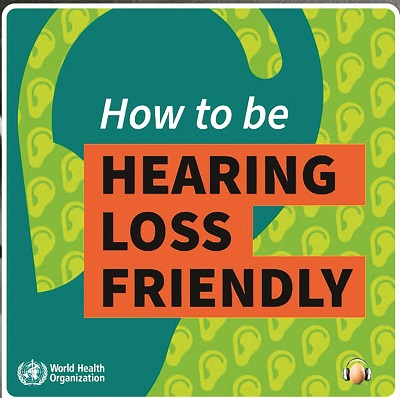By: Nthati Moerane
“Hearing loss has often been referred to as an invisible disability, not just because of lack of visible symptoms, but because it has been stigmatized in communities and ignored by policy makers. World hearing day 2024 will focus on overcoming the challenges posed by societal misperceptions and stigmatizing mindsets through awareness-raising and information-sharing, targeted at the public and health care providers,” said Tedros Adhanom Ghebreyesus, WHO Director-General.
March 3rd is considered a world hearing day as the World Health Organization (WHO) analyses the challenges faced globally by people with hearing loss. Globally, over 80% of ear and hearing care needs remain unmet. Also that deeply established societal misperceptions and stigmatizing mindsets are key factors to that limit efforts for preventing and addressing hearing loss and changing mindsets related to ear and hearing care is crucial to improving access and diminish the cost of unaddressed hearing loss.
World health day 2024 will be observed with different objectives such as to counter the common misperceptions related to ear and hearing problems in communities and among health care providers. To provide accurate and evidence-based information to change public perceptions of ear and hearing problems. Lastly, to call on countries and civil society to address misperception and stigmatizing mindsets related to hearing loss, as a crucial step towards ensuring equitable access to ear and hearing care.
WHO estimates that unaddressed hearing loss poses an annual cost of $980 billion each year. This is the cost incurred due to the impact of hearing loss without rehabilitation access, including productivity losses and social exclusion. That being said, member states, partners and stakeholders are encouraged to organize events to raise awareness in communities, in order to address misperceptions around ear and hearing problems and ensure accessible ear and hearing care. Also they shared some tips for when you are with a person with hearing loss; face the person, speak clearly and slowly, don’t exaggerate lip movements, speak one word at the time, keep a quiet setting and include them in all activities.
A significant barrier to hearing care is posed by widespread societal misperceptions and stigmatizing mindsets about hearing loss and ear diseases that commonly limit people from identifying ear and hearing problems and seeking the care they need. They contribute to social isolation and communication difficulties faced by persons with these problems and hinder the development of suitable policies and services for those in need.
Many of the causes that lead to hearing loss can be avoided through public health strategies and clinical interventions implemented across the life course. Prevention of hearing loss is essential throughout the life course, from prenatal and perinatal periods to older age. In children, nearly 60% of hearing loss is due to avoidable causes that can be prevented through implementation of public health measures.


